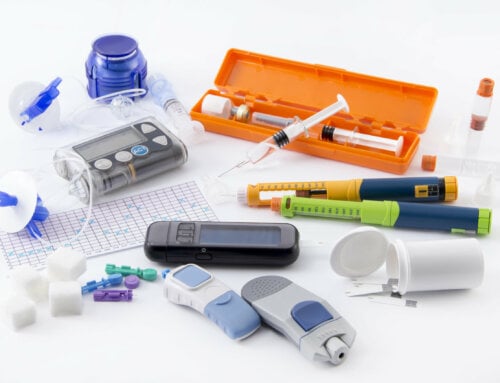In the past, type 2 diabetes was usually diagnosed in adults 40 years old and older. Now around 151,000 people who are 20 years old or younger have diabetes type 2. Learn more about the increasing frequency of type 2 diabetes in adolescence and what can be done about it.
- Most adolescence with diabetes used to have type 1. Research reveals type 2 diabetes in children and adolescents have become a growing problem in the United States. Contributing factors may include an increasing level of obesity in children as well as a low level of physical activity. Exposure to diabetes in utero may also be a contributing factor. Researchers are studying these factors and others to learn more about the increase in children and type 2 diabetes.
- Young people diagnosed with type 2 diabetes are usually between the ages of 10 and 19, have a strong history of type 2 diabetes in the family and are obese. Adolescents with the disease have poor glycemic control (A1C = 10% – 12%). Teens with type 2 diabetes belong to all ethnic groups but it is more commonly seen in non-white groups with the highest occurrence among American Indian youth. It can be difficult to detect type 2 diabetes in children especially if they have no symptoms or mild symptoms and because blood tests are required for diagnosis. With type 2 diabetes, the pancreas may produce normal insulin levels but the cells become resistant to it.
- According to the Centers for Disease Control and Prevention (CDC), one in three children born in the U.S. are likely to develop type 2 diabetes sometime in their lifetime unless they improve their diets and get more exercise. Type 2 diabetes can also increase the likelihood children could develop long-term complications such as heart disease, kidney disease and vision loss. Medical treatment and a diabetes self-management plan that includes glucose monitoring, proper nutrition and regular exercise can help keep a child’s blood sugar levels under control.
- Possible symptoms in children are increased appetite, extreme thirst, weight loss and increased urination. Another sign is acanthosis nigricans, a skin condition that is revealed by a patch of dark, rippled and velvety skin on the back of the neck, an underarm or between the toes or fingers. If your child experiences these symptoms, tell your family doctor and inquire about blood and urine testing. Specific blood and urine tests are used to diagnose type 2 diabetes. If your child is overweight, inquire about a fasting blood sugar test beginning at age 10. If there is a history of diabetes in your family, let your child’s doctor know about it.
- If your child has type 2, certain diabetes supplies are essential for proper self-management. Have your child review the use of them with their health care team. Make sure your child knows about keeping various supplies at a certain temperature and the safe way to dispose of other supplies. Have supplies available at your adolescent’s school, job and any other place they spend a lot of time. Talk to your child’s school nurse, teachers, coach and other adults about their condition and what to do in case of an emergency. Have a plan everywhere your child goes to ensure their well-being.
- Your adolescent may experience certain day-to-day effects associated with diabetes including thirst, headache, frequent urination and dry skin. Discuss these symptoms with your child’s doctor and find out the best ways to treat them. Have your child learn how to check his or her feet for sores, blisters, swelling and other irregularities that should be reported to the doctor immediately. Encourage your child to always wear well-fitted shoes including slippers at home and water shoes at the beach or pool.
- The first step after your child is diagnosed with type 2 diabetes is typically lifestyle changes such as cutting back on sugars and fats, eating fewer calories and exercising for at least a half hour each day. Serve healthy foods, encourage your child to participate in physical activity and learn more about diabetes as a family. If lifestyle changes are not enough, your child may need to take insulin and/or other drugs such as Metformin or sulfonylurea drugs to keep their blood sugar in control.
To help prevent type 2 diabetes in adolescence, encourage a healthy diet with low-fat dairy, lean meats and fish, whole grains and fruits and vegetables. Encourage your child to exercise and shed a few pounds to ward off other health complications. Work together as a family to get your child on the road to a healthier, longer life.







Leave A Comment